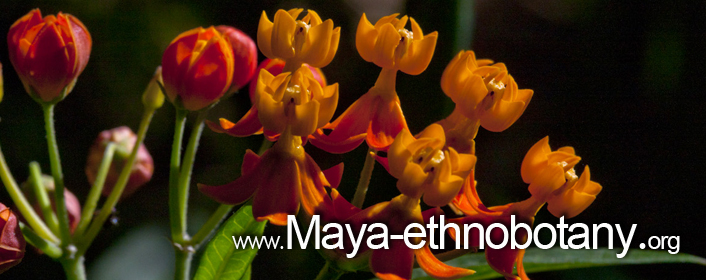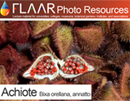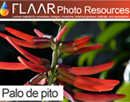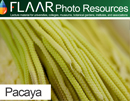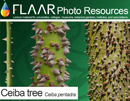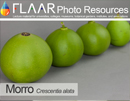When time and funding permit, each flower (each plant species) will have its own page, and its own PDF, and eventually its own PPT so that professors and students have plenty of material on Guatemala (and Honduras, etc) to study.
Heliconia adflexa, Coban, Guatemala, Hotel Monja Blanca, FLAAR, by Nicholas Hellmuth
This space is for flowers
we have recently found and photographed.
|
| Share
|
| Bibliography on Mikania micrantha |
Bibliography on Mikania micranthaMikania micrantha is one of the species we photographed in Paso Caballos, part of our last expedition in Peten. We are studying this species in Guatemala and are curious why no one lists this one species as edible, meanwhile elsewhere Americas mention the fruits and leaves edible of different species of Mikania Pagad (2005) Mikania micrantha is a perennial creeping climber known for its vigorous and unrestrained growth. It grows best where fertility, organic matter, soil moisture, and humidity are high. It damages or kills other plants by cutting off light and suffocating them. Native to Central and South America. It is one of the most widespread and troublesome weeds in the Pacific region. Its seeds are dispersed by the wind. Botanical description: Mikania scandes can be confuse with Mikania micrantha, but there are some differences you can keep in mind: The inflorescence is habitually looser and more paniculate in M. micrantha than in M. scandens; the inflorescence in M. scandens is mostly crowded with round-topped corymbs. The phyllaries (bracts) of the heads are acute in M. micrantha rather than attenuate as in M. scandens. M. micrantha seems never to show the purplish coloration which is nearly always present in M. scandens. Although the leaves vary greatly in contour both in M. scandens and in M. micrantha, they tend on the whole to be more sharply angled and triangular-sagittate or -hastate in M. scandens and more oval, cordate, and merely crenate in M. micrantha" (Holm et al., 1977; p. 322). PDF, Articles, Books on Mikania micrantha
Suggested web pages
|
Parque Nacional Yaxha, Nakum and Naranjo
Carnivorous Plants
Plants of Municipio de Livingston, Izabal
- Acrostichum danaeifolium, giant leather ferns
- Bellucia Pentamera
- Bibliography on Grias cauliflora
- Bibliography on Licania platypus
- Bibliography on Mangle negro (Avicennia germinans) L.
- Bibliography on Montriacardia arborescens
- Bibliography on Typha domingensis and Thypha latifolia
- Conocarpus erectus, white mangrove
- Edible Wetlands Plants, Hotel Tortugal
- Heliconia latispatha
- Heliconia wagneriana
- Manicaria saccifera Confra palm
- Neotropical trees of Guatemala need protection
- Nymphoides indica, waterlily flowers
- Pachira aquatica, zapoton
- Bibliography on Pithecellobium Mart., Neotropical trees of Mesoamerica
Ecosystems, Wetlands Aquatic Plants
Smartphone Camera Reviews
Bushes and small trees
Fungi and Lichens
Orchids
- Bibliography Bletia purpurea, aquatic orchid
- Bibliography, Epidendrum radicans
- Bibliography on Habenaria Orchids from Yaxha
- Bibliography, Lycaste virginalis var. alba.
- Bibliography, Macroclinium bicolor
- Bibliography, Prosthechea cochleata
- Bibliography Sobralia macrantha, Lirio de San Juan
- Bibliography, Sobralia xantholeuca
- Bibliography on Terrestrial shade orchids from Guatemala
- Bibliography on Terrestrial sunny orchids from Guatemala
Botanical Terms
Maya and Aztec flavorings for cacao, cocoa, chocolate
- Achiote, Bixa orellana
- Bibliography on Achiote, Bixa orellana
- Bibliography on Esquisúchil, Bourreria huanita
- Bourreria huanita
- Cassia grandis, bucut
- Chile Chocolate
- Chile Chocolate (Capsicum annuum var accuminatum)
- Chiranthodendron pentadactylon
- Cymbopetalum penduliflorum
- Guazuma ulmifolia
- Haematoxylum brasiletto
- Piper auritum, hoja santa
- Piper species
- Quararibea funebris
- Sterculia apetala, castaño
- Tagetes sp., Marigold
- Talauma, a variant of Magnolia
- Vanilla orchid
- Virola and nutmeg
Cacao, cocoa, chocolate
Consulting cacao & Theobroma species
Tobacco Ingredients of Aztec & Maya
Trees of Mesoamerica
- Bibliography on Acacia dolichostachya, Wild tamarind
- Bibliography, Bellucia costaricensis
- Bibliography, Bucida buceras
- Bibliography on Coccoloba belizensis Standl.
- Bibliography on Cojoba sp. and Cojoba arborea
- Bibliography, Ficus.
- Bibliography on Haematoxylum campechianum and H. brasiletto
- Bibliography on Hibiscus pernambucensis
- Bibliography on Ipomea murucoides
- Bibliography on Lacmellea standleyi, lechemiel
- Bibliography on Leucaena leucocephala
- Bibliography on mangle rojo (Rhizophora mangle)
- Bibliography on Manzanillo, Alseis yucatanensis Standl.
- Bibliography on Matilisguate, Tabebuia rosea
- Mangrove swamp Trees
- Bibliography on Ruagea insignis
- Bibliography on Pterocarpus officinalis
Bombacaceae, Bombacoideae
Tropical Fruits of the Maya
- Avocado Hass
- Bibliography on Coloc, Talisia floresii
- Bibliography, Dichogamy of avocado species
- Bibliography on Guayo, Talisia olivaeformis
- Bibliography on Laetia thamnia, Bakelac
- Bibliography on Maracuyá, Passiflora quadrangularis L.
- Bibliography on Punica granatum L., Granada
- Cashew
- Cuajilote, Parmentiera aculeata
- Granada
- Guanabas and Annonas
- Guava, Guayaba, Psidium guajava L
- Introduction to Papaya
- Nance a fruit of prehispanic Guatemala
- Passion flowers and fruits
- Passion flower, giant fruit
- Talisia floresii, Sapindaceae
- Carica Papaya Bibliography
Tropical Nuts
Spices, condiments, food coloring
Medicinal Plants
- Aristolochia, The largest flower in Guatemala, Bibliography
- Asclepias curassavica, bibliography
- Bibliography on Ciricote, Cordia dodecandra
- Bibliography on Contrahierba, Dorstenia contrajerva
- Bibliography on Falso hibisco, Malvaviscus arboreus
- Bibliography on Huele de noche, Cestrum nocturnum
- Bibliography on Lirio araña, Hymenocallis littoralis
- Bibliography on Roble Prieto, Ehretia tinifolia
- Bibliography, Tithonia diversifolia
- Canak
- Calliandra general info
- Guava, Guayaba
- Magnolia and Taluma
- Mayan medicinal plants
- Piper
- Tecomasuche, Coclospermum vitifolium
- Bibliography on Sufricay, Malmea depressa
- Bibliography on Wigandia urens
Underutilized edible plants
Edible Plants of the Mayan World
- Acacia, subin, bullhorn acacia
- Bibliography, Annona muricata
- Bibliography, Annona purpurea
- Bibliography, Annona reticulata
- Bibliography on Chipilín, Crotalaria longirostrata
- Bibliography on Chirimoya, Annona squamosa
- Bernoullia flammea
- Canna indica, tamale wrap
- Cuchamper, Gonolobus
- Guava, Guayaba
- Bibliography, Gonobolus sp.
- Bibliography, Parmentiera aculeata
- Pacaya palm Chamaedorea tepejilote
- Split leaf philodendron, Monstera deliciosa
Plants and trees used to produce incense
Utilitarian Plants
- Bibliography, Acacia farnesiana
- Bibliography on Aechmea bromeliifolia
- Bibliography on Agave americana
- Bibliography, native Agave species from Guatemala
- Bibliography on Anthurium crassinervium (Jacq.) Schott
- Bibliography on Balsa, Ochroma pyramidale
- Bibliography on Bamboo, Guadua longifolia (E.Fourn) R.W.Pohl
- Bibliography, Crescentia alata
- Bibliography, Crescentia cujete
- Bibliography on Hule, Castilla elastica
- Blepharidium guatemalense, irayol blanco
- Crescentia alata, Crescentia cujete
- Tecomasuche, Coclospermum vitifolium
- Bibliography on Coxte, Colubrina arborescens
- Bibliography on Madre cacao, Gliricidia sepium
- Bibliography on Tillandsia usneoides
